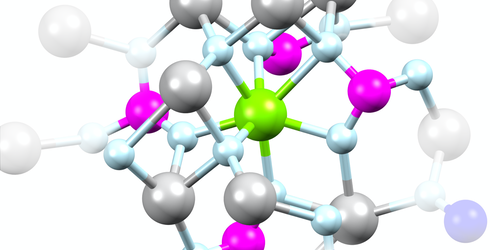Sensing Single Spins in Dense Spin Baths
Nuclear spins can be measured for certain atoms through their fluorescence signals. These signals can also determine the spins of the fluorescent atom’s neighbors. Until now that had been demonstrated only in “dilute nuclear-spin baths,” in which most of the atoms have an even number of protons and neutrons and, therefore, zero spin. Now, Thomas Kornher at the University of Stuttgart, Germany, and colleagues have measured the spin of a single silicon-29 nucleus ( 29Si), via a neighboring fluorescent cerium ion (Ce 3+), in the dense nuclear-spin bath yttrium orthosilicate ( Y2SiO5or YSO). Single nuclear spins could one day serve as qubits in quantum computers, which might now be built using a wider range of materials.
Kornher and colleagues made their measurements in ultrapure crystals of YSO, in which Ce ions replaced Y at a concentration of about 0.3 ppb. Focusing on a micrometer-sized patch of YSO, the researchers used circularly polarized laser pulses to excite Ce’s additional electrons into a specific energy and spin state. They then put the electrons into spin superposition states using a microwave field. With a subsequent series of laser pulses, they prompted a fluorescence signal from the Ce ions, from which they measured the coherence of the spin superposition.
By measuring the fluorescence of many individual Ce ions, Kornher and colleagues observed how neighboring spins perturbed the superposition. They found that the spins of the individual 29Si nuclei—the nearest lattice neighbor for about 20% of the Ce ions—revealed themselves by disrupting the electron spin superposition after a characteristic time interval. Next, the researchers hope to manipulate the 29Si nuclear spin itself with a view to implementing quantum logic gates.
This research is published in Physical Review Letters.
–Marric Stephens
Marric Stephens is a Corresponding Editor for Physics based in Bristol, UK.




